When we convert our forests, we can use the natural regeneration of Norway spruce
Natural and artificial regeneration of forests is a crucial stage of forest growth, where the diversity of tree species can be lost. In Europe, the Czech Republic is one of the countries that has significantly altered the species composition of its forests due to human activities. To rebuild forests that are more diverse and resilient to climate change, we can employ natural regeneration of Norway spruce, which possesses unique growth characteristics and an ability to adapt to environmental changes.
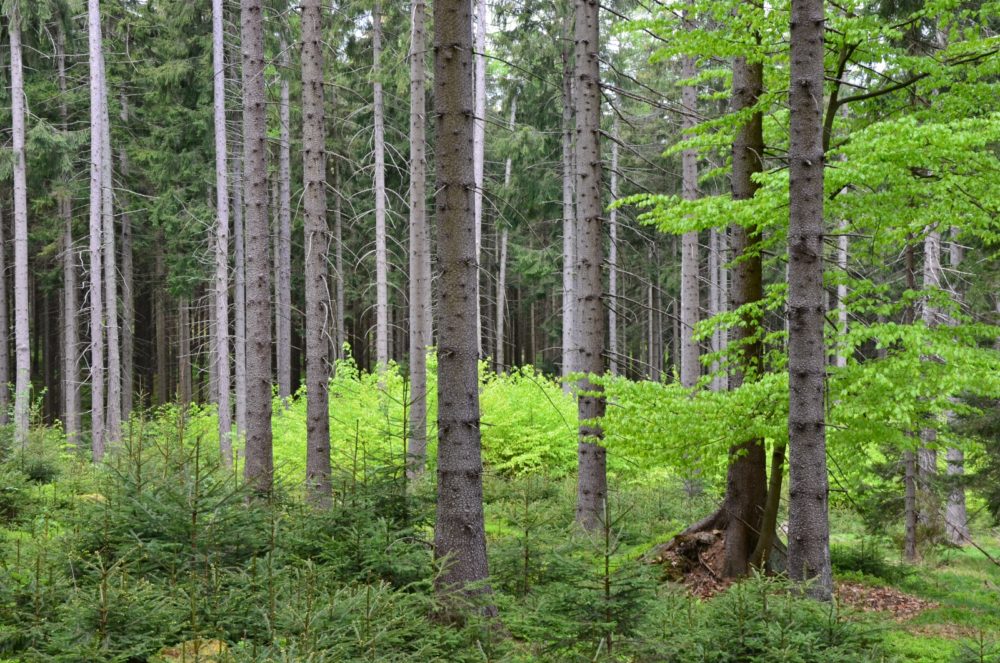 Photo: A mature forest stand with natural regeneration of Norway spruce and European beech gap, archive FGMRI (VÚLHM)
Photo: A mature forest stand with natural regeneration of Norway spruce and European beech gap, archive FGMRI (VÚLHM)
The deterioration of coniferous forests in the Czech Republic is a result of several factors, including changes in species composition, long-term application of conventional silviculture practices that have led to homogenization of forest stands, and the effects of global climate change. This large-scale decay is unprecedented and has required the processing of over 163 million cubic meters of incidental felling within an eight-year period (2015-2022).
The problem with the Norway spruce is not the tree species itself, but the way it has been spread and cultivated in our forests over the years. Inappropriate silviculture techniques have been used, leading to homogenous and contemporaneous Norway spruce stands. However, if planted in suitable habitats and with proper techniques, the Norway spruce can be a valuable addition to future mixed forests. It can be proposed for stands after the reconstruction of current homogenous and contemporaneous Norway spruce stands.
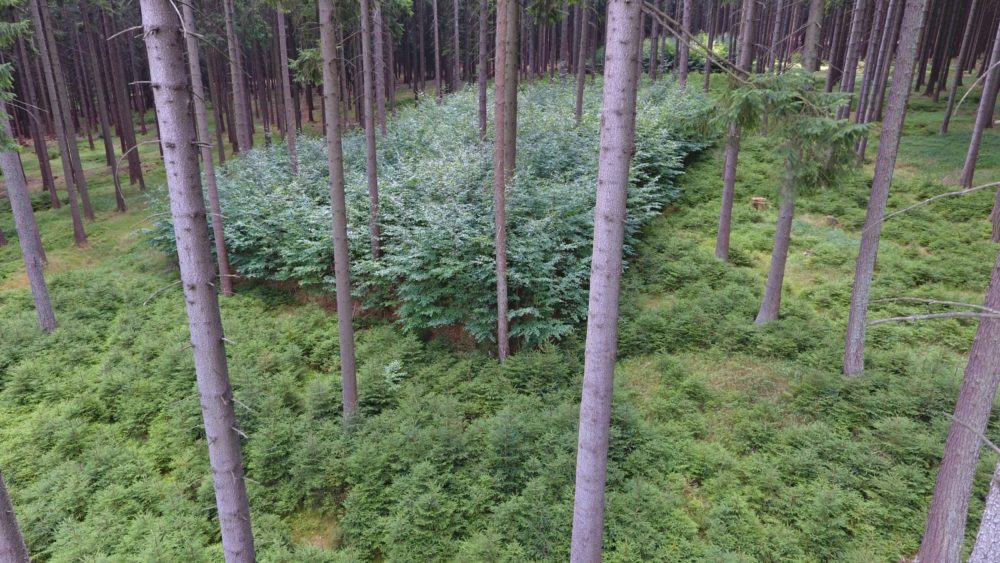 Photo: A mature forest stand with natural regeneration of Norway spruce and European beech underplanting, archive FGMRI (VÚLHM)
Photo: A mature forest stand with natural regeneration of Norway spruce and European beech underplanting, archive FGMRI (VÚLHM)
Spruce can be the primary, secondary, or mixed tree species in future forest stands, or it can be interspersed, depending on specific habitat conditions and expected impacts of extreme weather and climate fluctuations. To make our forests more diverse and resilient to climate change, we can also utilize natural regeneration of spruce, which has unique growth characteristics and an ability to adapt to environmental changes. Whenever possible, natural regeneration should be the preferred method during forest conversion and rebuilding processes. However, converting spruce stands typically requires an active cultivation approach.
Norway spruce is still a valuable tree species in our forests, and it is important to have a thorough understanding of its growth characteristics. To achieve this, scientists from the VÚLHM, v. v. i., have developed a certified methodology that can be used by foresters to manage stands, especially during the stage of stand conversion, see „The potential for application of growth and morphological acclimation patterns in Norway spruce (Picea abies (L.) Karst) natural regeneration to different light intensities (not only) for the process of forest stand transformation“ (Využití růstové a morfologické aklimace přirozené obnovy smrku ztepilého na různou intenzitu porostního světla pro posílení růstové diferenciace lesních porostů (nejen) ve fázi porostních přestaveb).
The methodology was developed as part of the NAZV project QK21020307 “Optimization of silviculture procedures for adaptation of forest ecosystems to climate change” (Optimalizace pěstebních postupů pro adaptaci lesních ekosystémů na klimatickou změnu“).
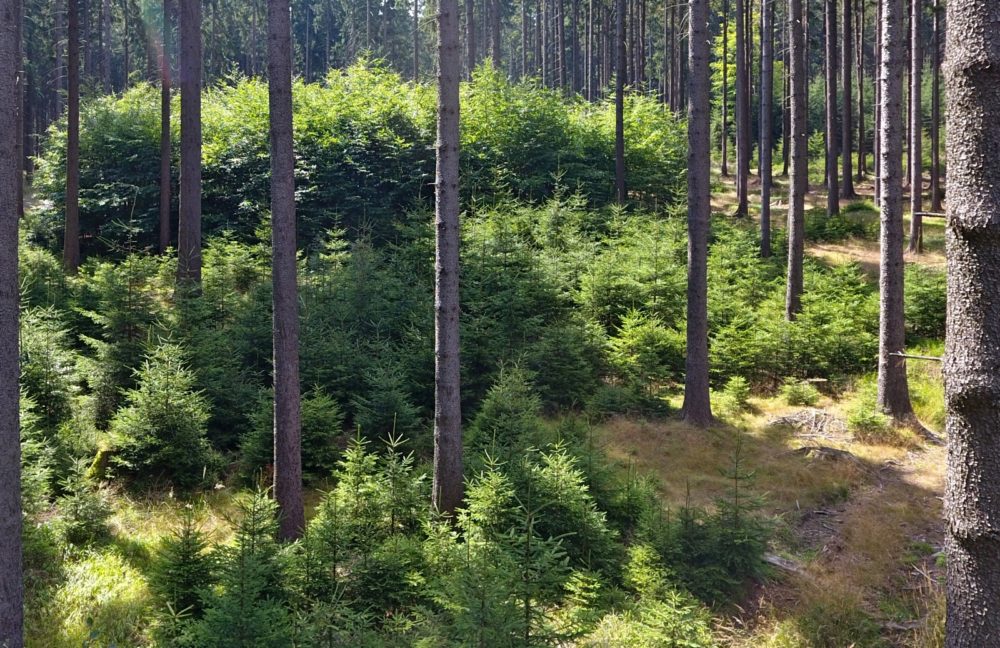 Photo: The growth of Norway spruce natural regeneration is influenced by the intensity of light in the stand, archive FGMRI (VÚLHM)
Photo: The growth of Norway spruce natural regeneration is influenced by the intensity of light in the stand, archive FGMRI (VÚLHM)
The researchers have developed a methodology that presents users with a detailed understanding of how natural regeneration of Norway spruce can be adapted to varying intensity of vegetation light, in order to promote forest cultivation. This approach can also be useful for applying the principles of biological automation in forest restoration and education, and for supporting and strengthening the growth differentiation of forest stands.
The methodology explains innovative techniques for silviculture work that involve natural regeneration of Norway spruce. These techniques are based on new knowledge regarding the needs of the spruce and its potential to adapt to growth in varying levels of vegetation light. The methodology also highlights the spruce’s natural properties, which can be used for acclimation to highly variable intensities of light.
Scientists have described the processes of growth acclimation and the different levels of morphological changes that occur, including their intensity and rate. These findings can be used to create diverse mixtures of forest tree species. This is especially important when controlling the growth dynamics of restoration efforts and reintroducing tree species that were previously absent from the forest composition. This helps to transform the forest into a more diverse and sustainable ecosystem.
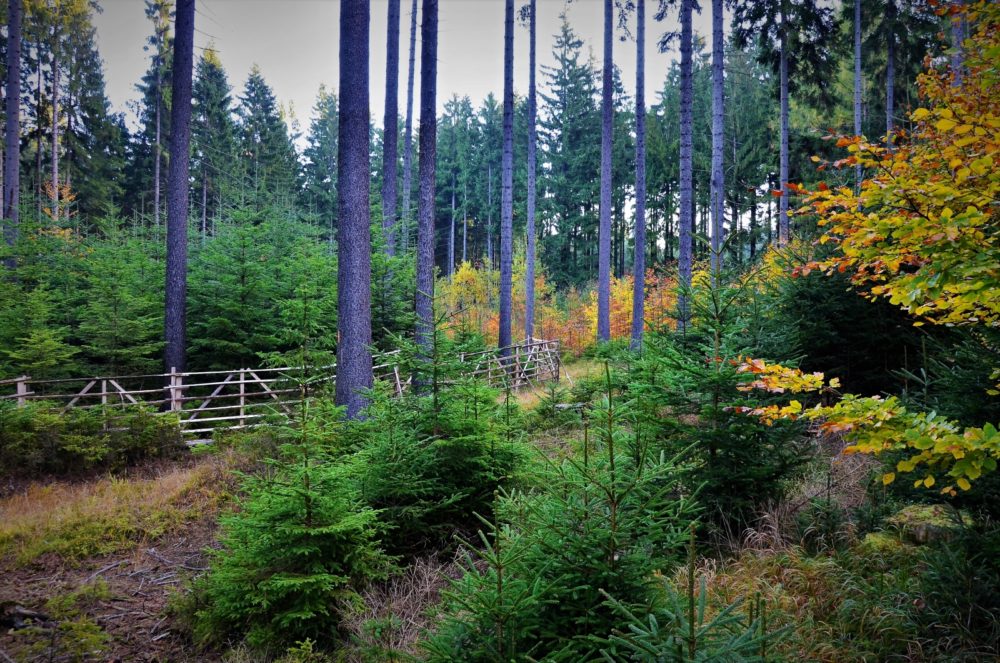 Photo: Admixing deciduous trees of the target species composition to fragmented natural regeneration of Norway spruce, archive FGMRI (VÚLHM)
Photo: Admixing deciduous trees of the target species composition to fragmented natural regeneration of Norway spruce, archive FGMRI (VÚLHM)
Silviculture methods utilize the natural regeneration of Norway spruce which has wide photo-morphological plasticity. These methods are mainly applied in the reconstruction of homogeneous and contemporaneous stands. The aim is to enable the proper growth of spruce while also ensuring an appropriate growth lead for other trees, typically other shade-tolerant climax tree species such as silver fir and European beech.
It is important to ensure that newly mixed tree species are fully utilized in future stands, and not excluded or reduced in their representation due to the growth dynamics of spruce. It is also crucial to ensure that their full use in the main stand level is not limited, both from the perspective of production and in terms of strengthening the stability of the forest.
The methodology procedures that have been mentioned can also be effectively utilized in mixed stands where Norway spruce is present. These procedures can also be used in stands with a richer tree species structure, which will further promote growth, structural, and spatial differentiation.
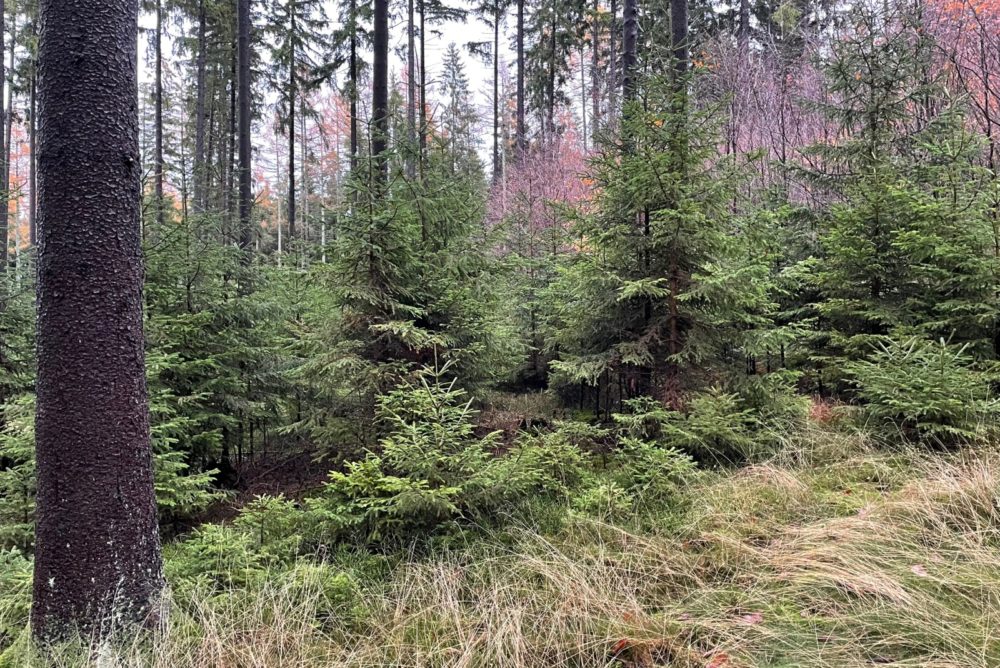 Photo: A growth-differentiated group of Norway spruce natural regeneration five years after schematic cleaning, archive FGMRI (VÚLHM)
Photo: A growth-differentiated group of Norway spruce natural regeneration five years after schematic cleaning, archive FGMRI (VÚLHM)
The methodology provides additional guidance on silviculture practices when natural regeneration of the upper canopy is effectively applied to the regenerating vegetation. Conversely, when high intensities of vegetation light or openness of the upper vegetation canopy cause the effect of biological automation to disappear, and cleaning becomes necessary, the methodology offers guidelines for such situations.
Finally, the methodology provides insights into the ecological conditions required for the formation of regeneration. This includes the importance of the overall vegetation microclimate and the negative impact of direct radiation on its formation. Additionally, the methodology offers information on the development of regeneration density and the onset of the auto reduction process in the corresponding growth phases.
Methodology „The potential for application of growth and morphological acclimation patterns in Norway spruce (Picea abies (L.) Karst) natural regeneration to different light intensities (not only) for the process of forest stand transformation“ (Využití růstové a morfologické aklimace přirozené obnovy smrku ztepilého na různou intenzitu porostního světla pro posílení růstové diferenciace lesních porostů (nejen) ve fázi porostních přestaveb) can be downloaded here.
Authors of methodology: Ing. et Ing. Pavel Bednář, Ph.D., Jiří Bína; FGMRI (VÚLHM, v. v. i.), Research Station Opočno; e-mail: pavelbednar13@seznam.cz, binajiri@gmail.com
Prepared by: Ing. Jan Řezáč, (FGMRI) VÚLHM, v. v. i., e-mail: rezac@vulhm.cz
